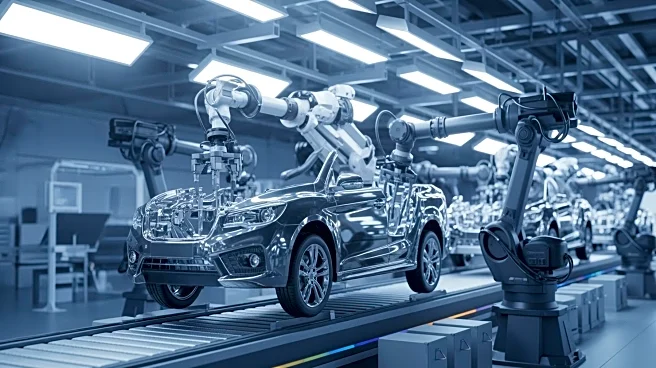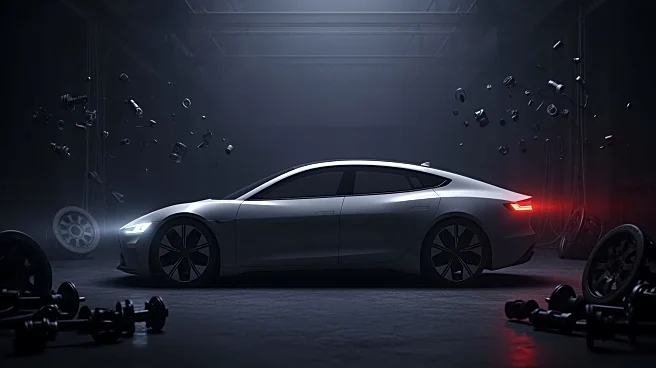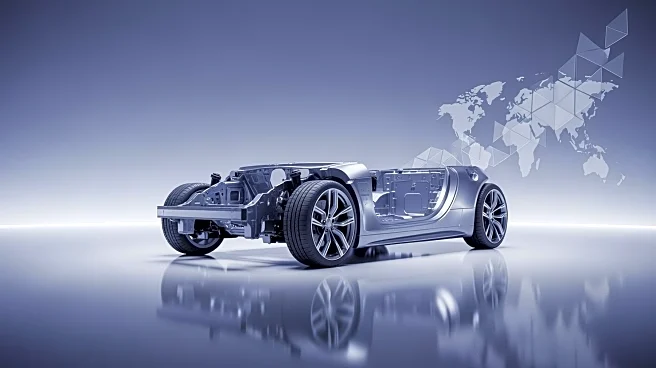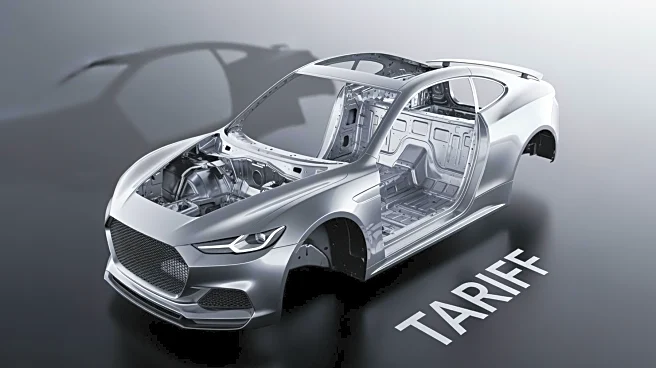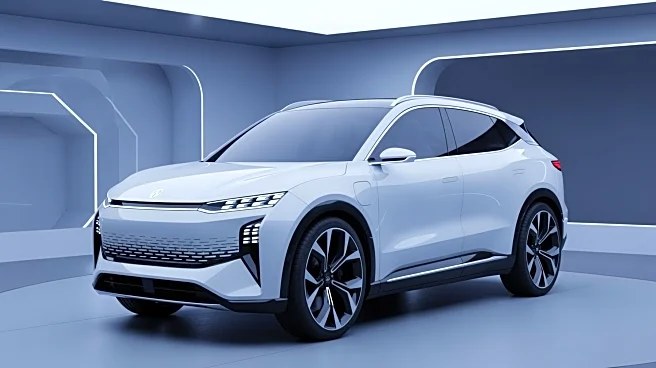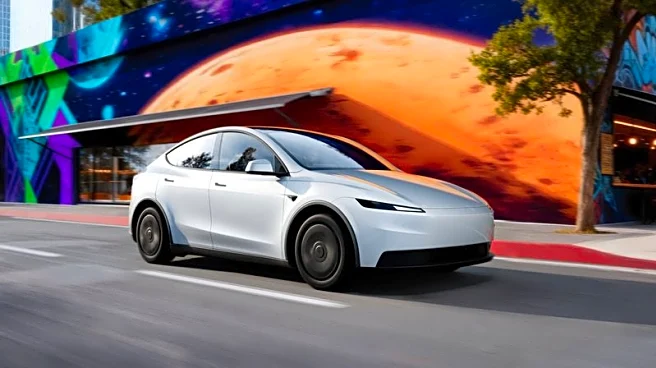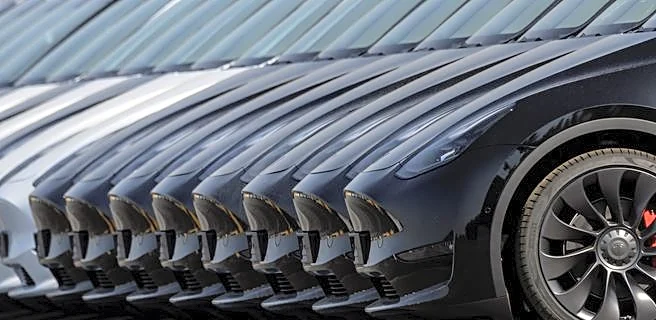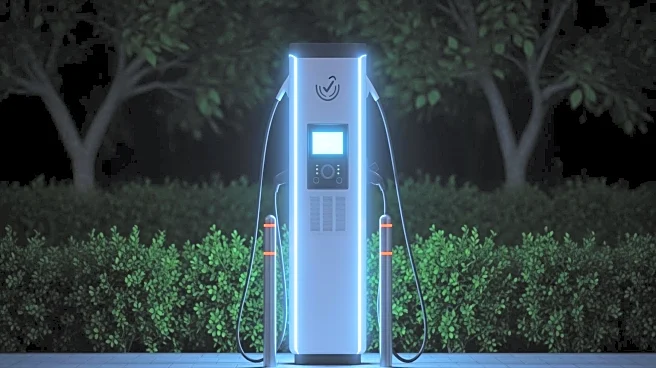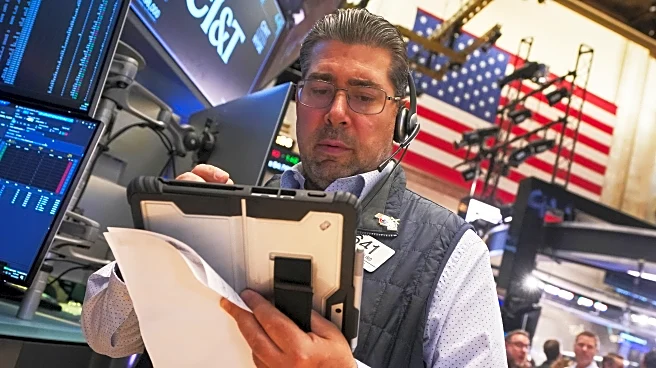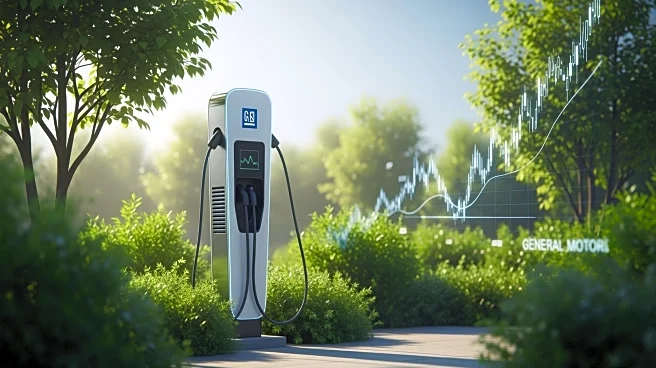What's Happening?
Automotive World has projected a 1.6% decline in global light vehicle production, estimating a total of 78 million units for 2025. This downturn is attributed to slower-than-expected development in the
electric vehicle market in Europe and the impact of tariffs and consumer uncertainty in the United States. North America is expected to experience a significant production decrease of 5.2%, losing over 830,000 vehicles. The report highlights the looming threat of a semiconductor shortage due to Chinese export restrictions on Nexperia chips, which could further disrupt production. Despite these challenges, Toyota maintains its leadership position globally, with a 13.6% market share, while Rivian and Lucid, considered disruptors, face mixed production forecasts.
Why It's Important?
The decline in vehicle production has significant implications for the automotive industry, affecting manufacturers, suppliers, and consumers. Reduced production can lead to higher vehicle prices and limited availability, impacting consumer purchasing decisions. The semiconductor shortage poses a risk to production continuity, potentially exacerbating supply chain issues. The U.S. automotive sector, facing tariff-related challenges, may see shifts in manufacturing strategies, affecting employment and economic stability in regions reliant on auto production. Companies like Toyota and Stellantis may need to adapt to maintain market share, while new entrants like Rivian and Lucid navigate growth hurdles.
What's Next?
Automakers may need to explore alternative supply chains to mitigate the impact of semiconductor shortages. The industry could see increased investment in domestic production capabilities to reduce reliance on foreign components. As tariffs continue to affect production costs, manufacturers might adjust pricing strategies or seek new markets to offset losses. The evolving landscape may prompt strategic partnerships or mergers to enhance competitiveness. Stakeholders will closely monitor policy changes and economic indicators to anticipate further disruptions and opportunities for growth.
Beyond the Headlines
The shift towards electric vehicles and sustainable practices remains a critical focus for the industry, despite current production challenges. Long-term investments in technology and infrastructure could reshape the automotive landscape, emphasizing innovation and environmental responsibility. Ethical considerations around labor practices and environmental impact may influence consumer preferences and regulatory policies, driving industry transformation.
